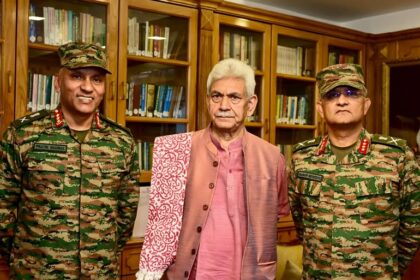J&K Government Plans New Media Policy Amidst Press Club Controversy.
Empanelment of Digital Media, Social Platforms on Agenda; Srinagar Press Club Dispute Sparks Debate.
||Black and White Digital News||
||Parvinder Singh March 19, 2025||
Jammu: In a significant move aimed at regulating and incorporating emerging digital platforms, the Jammu and Kashmir government on Tuesday announced that it is in the process of formulating a new media policy to include social media platforms, news web portals, and websites for empanelment. This statement was made in response to a cut motion raised by Pulwama MLA Waheed-ur-Rehman Para in the Assembly.
Towards a Modern Media Policy:
According to the government, the new policy is being structured to align with the evolving media landscape while adhering to the guidelines set by the Directorate of Advertising and Visual Publicity (DAVP), Government of India.
“The formulation of a new media policy aims to align with the evolving media landscape and adhere to the standards set by DAVP,” the government stated, underlining the need to regulate and streamline media operations in the region.
This move is expected to bring greater accountability, transparency, and structured engagement between the government and media houses, including digital-first news platforms that have gained prominence in recent years.
However, the decision also raises concerns regarding government scrutiny over digital news portals, especially given the history of restrictions on press freedom in the Union Territory.
Srinagar Press Club Controversy: A House Divided:
In a separate revelation, the government addressed the controversy surrounding the Srinagar Press Club, which has been mired in uncertainty since its closure. The official response dismissed allegations of forceful eviction, instead attributing the closure to internal disputes among its members.
“The Srinagar Press Club was operating from a building provided by the Estates Department in Press Enclave, Srinagar. However, due to disputes among its members, the building has been vacated and is now temporarily occupied by Jammu & Kashmir Police,” the government clarified.
The government further disclosed that the registration of the Kashmir Press Club was put on hold by the Department of Industries and Commerce due to pending clearance from the Criminal Investigation Department (CID).
While the old club remains in limbo, the government confirmed that a new entity named the Press Club of Kashmir has already been registered under the Department of Industries and Commerce.
Press Freedom or Bureaucratic Hurdles?
The official explanation regarding the press club’s closure has not convinced many within the media fraternity, who view the government’s bureaucratic interventions as an attempt to curb journalistic independence. Critics argue that the press club dispute should have been resolved internally instead of leading to the building being handed over to security forces.
Additionally, concerns loom over the new media policy, with some fearing that it could serve as a tool for selective empanelment of digital media platforms, favoring pro-government outlets while silencing dissenting voices.
What Lies Ahead?
As the government moves forward with its new media policy, key questions remain:
Will the policy create an inclusive media environment or impose new restrictions?
Can the press club controversy be resolved without further undermining press freedom?
How will the empanelment criteria for digital platforms be defined, and will it ensure equal opportunities for independent media houses?
With digital journalism becoming the primary news source for a growing section of the population, the impact of this policy on press freedom in Jammu and Kashmir will be closely watched in the coming months.
A Defining Moment for J&K Media:
While the government insists that its actions are aligned with transparency and regulations, the unfolding situation reflects a deeper power struggle between administration and independent journalism in Jammu and Kashmir. Whether the new media policy ushers in press reforms or regulatory control remains to be seen, but one thing is certain—J&K’s media landscape is on the brink of a major transformation.










